
The parish dates from 1919, a building for its school was purchased in 1920, and its first church, a temporary wood frame structure, was built in 1921. Construction of this Art Deco style church started in December, 1939.
The church is in the Southampton neighborhood, near the southwestern edge of the City. It was developed in the early 20th century by an Englishman who gave the area its distinctive British street names, while it was settled by German immigrants. The area now has many immigrants from Bosnia, as well as trendy urban hipsters.
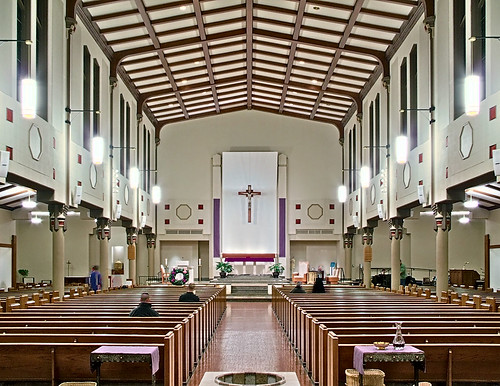
The church's modern interior, with the baptismal font seen here in front.

Crucifix over the altar.
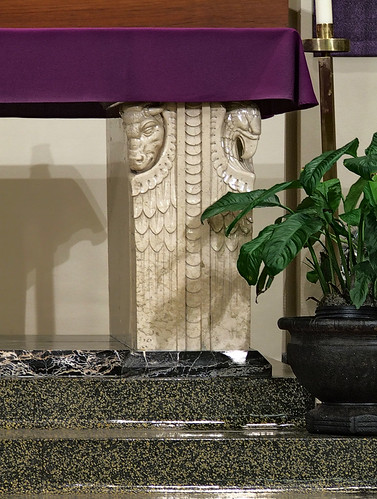
As seen in this altar detail, the supports (stipes) for the table (mensa) have carved symbols of the Evangelists.

Tabernacle, located to the left of the altar.

On the left is a copy of the Theotokos of Vladimir — an icon of the Blessed Virgin Mary with the Christ Child — famously used in Russia for the consecration of patriarchs and tsars.
Can anyone identify the icon on the right?
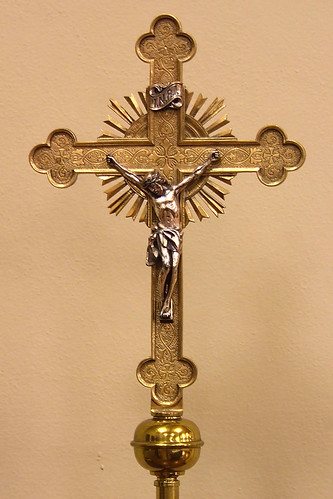
Processional crucifix.
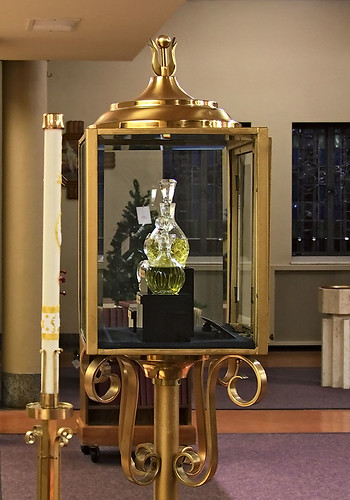
Near the front entrance is this ambry, with holy oils.
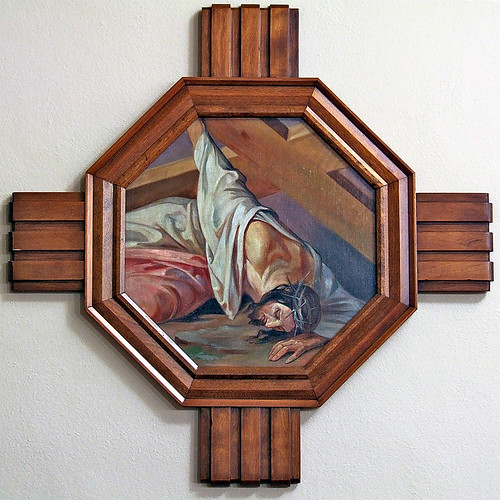
Station of the Cross.

Art Deco column capital.

Pipe organ and choir loft.
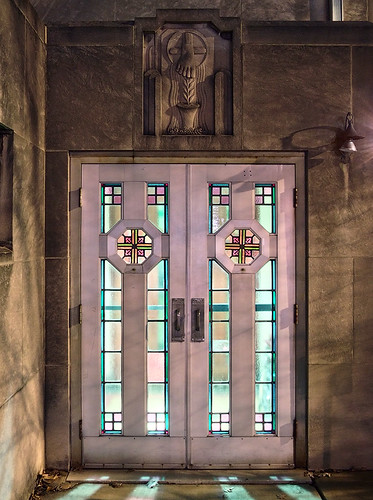
Exterior door. The symbol over the door seems to represent the Washing of the Feet (John 13:5); but what is the meaning of the potted plant under the foot?

One of the stained glass windows, as viewed from the exterior, shows a lamp and a quill.
The window appears a bit fuzzy because it is covered by a thick plastic cover. Back in the early 1970s, there was an unfortunate trend of drugged-out youths smashing or shooting at stained glass windows, and very many churches subsequently covered them over with tough plastic. Because of this vandalism, many Catholic churches locked their doors — instead of remaining always open for Eucharistic adoration and other prayer. Slowly, churches are now opening up again.
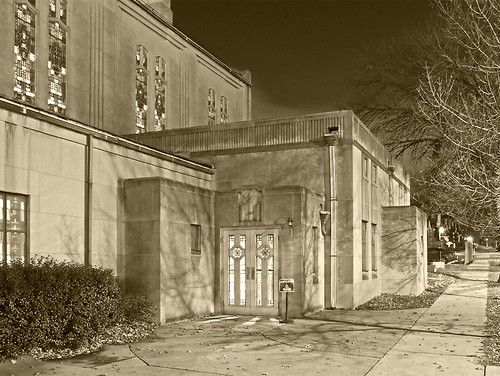
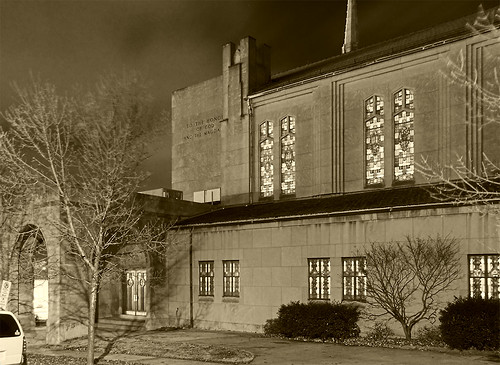
The trees are blurry because it was quite windy that night. This photo, as well as the previous one, is sepia-toned, because the city-owned yellow sodium vapor streetlights that illumine this side of the church do not provide a full color spectrum. Sepia looks better than ill-looking yellow-green.
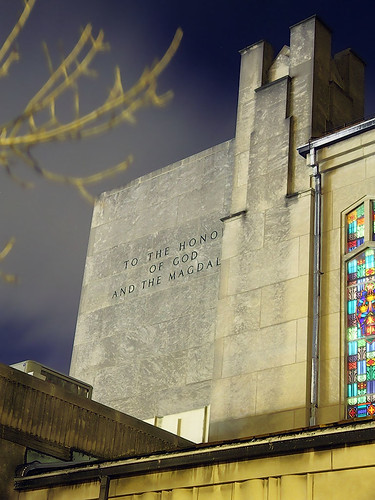
TO THE HONOR
OF GOD
AND THE MAGDALEN
Address:
4924 Bancroft Avenue
Saint Louis, Missouri 63109


I would guess that the icon to the right is the slaughter of the innocents by Herod and the Holy Family's flight into Egypt, but I can't be sure since I can't see the the Greek lettering clearly enough to read it.
ReplyDeleteKim,
ReplyDeleteYou are right. I looked at the original photo (which has more detail), and it is pretty clear that it is the Slaughter of the Innocents and the Flight Into Egypt.
As far as I can tell, the Greek letters are:
Eta
Beta
Rho or Digamma
Sigma (looks like a 'C')
Phi
Omicron or Pi
Kappa
Tau
Omicron or Pi
Mu
Iota
Alpha
Brsphoktomia?
My only knowledge of Greek is from the use of Greek letters in mathematics. I've noticed that some of the letters are drawn differently in liturgical Greek.
Mark,
ReplyDeleteThe Eta simply means "the." Brefo (Beta+rho+epsilon+phi+omega) means "infant." As for the "ktomia" part, I'm almost sure that it means "slaughter," but I can't derive it from any of the Greek verbs I know that denote killing or murder. When I go back to the seminary in January I will look up a lexicon, so as to get beyond the limitations of my meagre vocabulary (learnt in a semester of New Testament Greek).
In any case, thank you for your wonderful blog. I have become fascinated by St Louis and I hope to visit your city some day.
Ah, so that is an epsilon, makes sense. The word was missing a vowel.
ReplyDeleteThank you for your compliment. Beware of visiting Saint Louis, though -- many come to visit and find out that they don't want to leave!
I'm not sure if the Greek etymology is of any further interest to you, but just in case: I found out today that "vrefoktonia" is the Modern Greek word for "infanticide" (Beta is pronounced as a "v" sound). It seems possible that this is also word that liturgical Greek uses for the Slaughter of the Innocents. So, if the word is "brephoktonia" with a Nu rather than a Mu, then we have "ktonia" from the verb "kteino" (Kappa+tau+epsilon+iota+nu+omega) which means "I kill" or "I destroy."
ReplyDelete- Kim
I enjoy learning about language. The mu possibly could be a nu.
ReplyDeleteI think the symbol above the door is from when Mary Magdalen washed Jesus' feet with her hair and anointed them with oil/perfume.
ReplyDelete